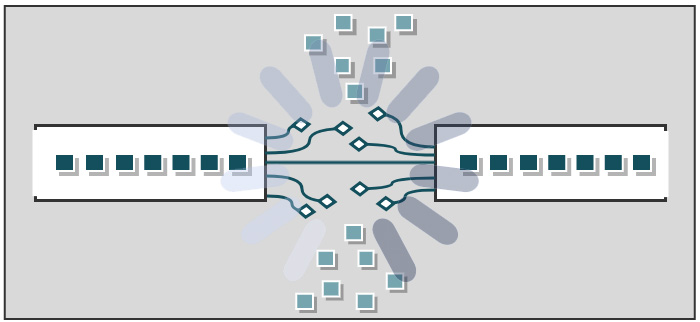In the last decade, video sharing services, and especially video streaming, have become increasingly popular. Many users consume hours of videos a day in the form of news, tv series, and movies on sharing services like Netflix, Amazon Streaming, YouTube, and Hulu. Plus, more and more mobile applications are taking advantage of live video streaming for smart devices such as baby monitors and home security systems.
Video accounted for 73 percent of internet traffic in 2016, and according to forecasts released by Cisco, video will make up 82 percent of all internet traffic in 2021.
How Does the Network Affect Video Streaming Quality?
As video sharing services gain importance in the multi-media market, quality of service (QOS) and quality of experience (QOE) become the biggest obstacles to competing effectively with broadcast television. Users stream video predominantly over Wi-Fi or cellular networks, but these can have considerably different characteristics. Since the network is the single most dynamic factor in online video streaming, providers of video applications must know how changing network conditions will affect the end user’s watching experience.
Internet video is based on packet transmission, and can be influenced by delays, transmission errors, data losses and bandwidth limitations which can all have a devastating impact on the perceived quality of the multimedia content. Testing video streaming on emulated networks and conducting bandwidth stress tests enables developers to understand how these impairments affect the quality of the video stream and adjust the streaming characteristics to provide the best quality of video possible.
How Will Your Video React to Specific Network Conditions?
In a perfect scenario, video gets transferred over the network at the same rate as it gets played back. When the network is unable to keep up with video playback, the player will usually just switch to a lower quality version of the stream or move to a lower bandwidth. However, since sufficient video quality can be achieved at rates of one or two megabits per second, lack of bandwidth is seldom the problem.
Packet loss and excessive buffering present the toughest challenges to streaming video quality. When one packet gets lost, the video player application will stop receiving data until the lost packet has been re-transmitted, even if other data packets continue to arrive. While losing a single packet doesn’t necessarily cause the user to experience an error, if a second packet gets lost before the first lost packet has been re-transmitted, problems begin to arise. TCP’s fast re-transmit and the video player’s buffer can recover from momentary delays in data delivery, but continued packet loss in a short period of time will likely cause a user-visible re-buffering event.
How Does Testing Help Predict and Optimize Streaming Performance?
Testing video applications in a perfect lab environment won’t accurately predict how they will perform on real-world networks. Network emulation tools can simulate network impairments like bandwidth, latency, and packet loss to help developers validate and optimize video applications before going live.
By introducing network emulators into the QOS in lab testing, developers can program video decoders to adjust to give viewers the best possible experience. Use emulators to mimic networks, including cellular and Wi-Fi, and simulate a variety of packet-loss scenarios. With the right insights, adjustments such as video dpi quality, buffering, and other decoding options can keep a video playing smoothly no matter what the network conditions.
Maintaining quality is especially important for video providers because viewers have so many streaming options. If content doesn’t begin streaming immediately or buffering occurs even once, viewers will abandon the video. Apposite’s high precision, easy to use network emulators provide a fast path to proof of concept for video applications on real-world networks, so they perform as expected when rolled out to users.












